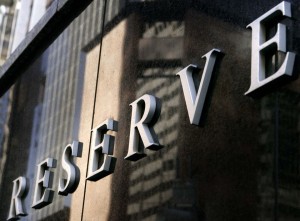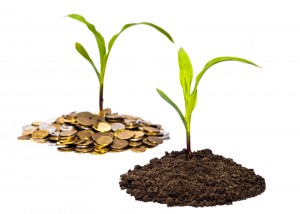Well, they tell us that it makes the world go round, and maybe it does for all I know about solar physics, but how often do we stop to think what money actually is?
Money plays a key role in our lives and to some extent whether or not we find our lives to be enjoyable and fulfilling.
Behavioural economists have noted that people act differently when money is involved in a decision – by making something free of charge people often feel inclined to take less of it than when there is a charge. 
Which is odd because the traditional laws of supply and demand suggest that they should take as much of the free item as they can!
Strange what money does sometimes…
I once read a story about a young hot-shot manager coming into a dismally failing music store and finding a huge bargain bucket of records for sale for 49 pence.
He took them out of the bucket and placed them on a display shelf and stuck £5 price labels on them and the store sold the lot within a week.
What happened there?
He added a perceived monetary value to the slow-moving stock.
Curious-er and curious-er…
What would we do without it?
It’s pretty hard to imagine a world without money, isn’t it? What would we do without it?
We could still exchange goods and services, but ultimately we would need to resort to some form of barter.
In fact, sometimes countries do have to resort to barter when hyperinflation results from of a collapse of confidence in the currency.
In the 1980s, Soviets used cigarettes as currency when the empire was failing; more recently many Zimbabweans became billionaires as their currency became effectively worthless.
At the conclusion of World War I the German Weimar Republic was instructed to pay reparations to the victorious countries including France and Britain.
Whether Germany was crippled by the reparations or elected to destroy its economy to avoid paying them was debated by the respective countries, but either way the outcome was massive hyperinflation.
By 1923 the price of bread was doubling while Germans stood in the queue, some took their pay home in wheelbarrows and when visiting the cinema others took lumps of coal instead of mountains of cash as payment.
Eventually a new currency had to be introduced – the Rentenmark – and behind the scenes Hitler’s German Workers (Nazi) Party began its inexorable rise to power amidst the bedlam.
The types of currency
There are only two main types of currency: commodity and fiat.
A commodity currency is one which has an intrinsic value, the most obvious example being gold, although in theory other metals or commodities could be used.
A fiat currency on the other hand, is one without value.
Our dollar notes today are really only colourful pieces of paper aren’t they?
They are only worth $10, $20 or $50 because the government says so. 
Originally fiat currency was exchangeable for commodity money – it was, technically at least, possible to exchange US dollar bills for an amount of gold.
This all changed in 1971 when President Nixon took the US off the gold standard.
Now the fiat currency was not backed by gold – it was a pure fiat currency and the government could print as much of it as it liked.
And guess what…it pretty much has!
As the currency itself is worthless the entire financial system is reliant upon people’s faith in the value of the currency. Very scary thought!
The money supply
I’ve written before about the controversial policy of monetarism, which is focused upon controlling the money supply and allowing other economic problems to sort themselves out through free markets.
The great problem with monetarism is that it is so very difficult to measure what the amount of money in circulation actually is.
The Reserve Bank of Australia measures the money supply, like other central banks, using a range of definitions and aggregates, thus:
- M1: currency bank + current deposits of the private non-bank sector

- M3: M1 + all other bank deposits of the private non-bank
- Broad Money: M3 + borrowings from the private sector by NBFIs, less the latter’s holdings of currency and bank deposits
- Money Base: holdings of notes and coins by the private sector plus deposits of banks with the Reserve Bank of Australia (RBA) and other RBA liabilities to the private non-bank sector
Another great difficulty in controlling the money supply is that, quite apart from it being extremely difficult to measure, the supply of money can be affected by events outside the control of the central bank.
One cited example is that of when banks introduce new financial instruments – this effectively increases the supply of ‘money’ in circulation without the central banks having had input or any such intention.
These perhaps unsolvable problems have caused some central banks to stop publishing money supply figures, and some have concluded that focussing only on the money supply is therefore not enough.
Where next for the great planet Ponzi?
It’s often been said that government debt is unsustainable, but is it?
Developed governments have been continually in debt for decades and the world is still turning. 
The question, therefore, is not so much one of principle as one of degree.
Ultimately, money is supposed to be something which is of value and holds its value.
The worry today is that we know that over time the money in our pocket becomes worth progressively less, and thus – as identified by a concerned Ben Bernanke – too many of us spend more time trying to think of what to do with our money to protect its value than we do undertaking productive activity.
The great worry in a number of debt-laden countries, including the US, is that the end-game to all of this debt will be high inflation as governments are forced to print more money to pay off their debts.
We are fortunate in Australia that our inflation is currently low but a look at any historical chart tells us that we should not be complacent.
Protection from inflation
My in-laws are farmers and over the years have continued to own farmland – so they will intuitively know that what I am about to say is definitely true: farmland can be a fantastic hedge against inflation.
No matter what the wider economy is doing, well-located farmland very often seems to hold its value.
What if you aren’t into farming? 
There are other places to shelter from inflation: gold is traditionally popular.
The trouble with gold is that, although it looks very nice and is quite shiny, it doesn’t pay you a nice income like farmland – and it’s also darned expensive right now in historical terms, so it may be risky.
Other commodities can be a good inflation hedge: such as oil and natural gas.
And finally, if none of that floats your boat, there is also commercial real estate and prime-location residential real estate.
Sam Ewing once said: “Inflation? That’s when you pay fifteen dollars for the ten dollar haircut you used to pay five dollars for when you still had hair.”
And I really can’t think of anything wittier than that, so there, for today, I shall leave it.

No comments:
Post a Comment